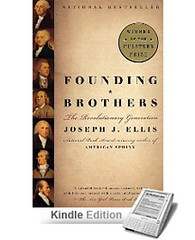Utterz is dead. Long live Utterli.
Mashable called it an impression of Prince. And another member, Jason, who is bullish on the cross-posting service, says he’s utterly confused. Jason doesn’t seem to be alone. Confused is what most people seem to be.
According to their blog, Utterz has “outgrown” its identity, but Mashable offered a more plausible explanation. After conducting some market research, they learned that many people, especially females, did not like the name Utterz.
That might make sense to folks like Sheryl Altschuler, president of A-Strategies Marketing Consultants, who subscribes to the idea that the “the customer is in control from here on out …”
This is also one of several places where I depart from the construct that the “customer is in control” of the identity and the brand. In fact, this thinking might be precisely the reason that Utterli has taken some people aback. What customers are they talking about? By some accounts, including their own, Utterli seems to be relying on input from some people who aren’t customers at all. And, the identity change is barely half and half.
They killed Bessie, but insist members can still “utter” and can continue to use meaningful references to “utterers” and “utts.” They put up the new logo, but any marketing and instructional videos will have to change; it will be a long time before all the directories and databases can be updated; and the new name will forever remind people of what it once was, perhaps using it when feeling sentimental much like they did after trying New Coke.
(I don’t even want to talk about the mark, a generic identity that looks something like a cross between a lemon-lime soda logo and a Partridge Family partridge, other than to say it's utterly unmemorable compared to the cow that pops up all over Flickr and elsewhere.)
Of course, even if everyone liked the new name, you have to wonder about the execution. Social media companies have a nasty tendency to spring change on their communities, which is the opposite of being responsive or responsible. Some customers, women included, are even wondering why they weren't asked and a few are considering a petition to change it back.
While it is too early to say in this case, the social media contract that proposes that the customers are in control, might have led Utterli, formally Utterz, astray. No, customers do not control the brand or the message. No one controls it.
“If you don’t manage the message, the message will manage you.”
Of course, none of this is to say that I don’t hope for their best outcome. I’ve met some of the folks behind Utterli, formally Utterz, and believe they were probably convinced it was the right thing to do. It's still a shame though. The name change keeps drowning out the more important message — they’ve enhanced some services.
Who did? Utterli, formally Utterz.

Mashable called it an impression of Prince. And another member, Jason, who is bullish on the cross-posting service, says he’s utterly confused. Jason doesn’t seem to be alone. Confused is what most people seem to be.
According to their blog, Utterz has “outgrown” its identity, but Mashable offered a more plausible explanation. After conducting some market research, they learned that many people, especially females, did not like the name Utterz.
That might make sense to folks like Sheryl Altschuler, president of A-Strategies Marketing Consultants, who subscribes to the idea that the “the customer is in control from here on out …”
This is also one of several places where I depart from the construct that the “customer is in control” of the identity and the brand. In fact, this thinking might be precisely the reason that Utterli has taken some people aback. What customers are they talking about? By some accounts, including their own, Utterli seems to be relying on input from some people who aren’t customers at all. And, the identity change is barely half and half.
They killed Bessie, but insist members can still “utter” and can continue to use meaningful references to “utterers” and “utts.” They put up the new logo, but any marketing and instructional videos will have to change; it will be a long time before all the directories and databases can be updated; and the new name will forever remind people of what it once was, perhaps using it when feeling sentimental much like they did after trying New Coke.
(I don’t even want to talk about the mark, a generic identity that looks something like a cross between a lemon-lime soda logo and a Partridge Family partridge, other than to say it's utterly unmemorable compared to the cow that pops up all over Flickr and elsewhere.)
Of course, even if everyone liked the new name, you have to wonder about the execution. Social media companies have a nasty tendency to spring change on their communities, which is the opposite of being responsive or responsible. Some customers, women included, are even wondering why they weren't asked and a few are considering a petition to change it back.
While it is too early to say in this case, the social media contract that proposes that the customers are in control, might have led Utterli, formally Utterz, astray. No, customers do not control the brand or the message. No one controls it.
“If you don’t manage the message, the message will manage you.”
Of course, none of this is to say that I don’t hope for their best outcome. I’ve met some of the folks behind Utterli, formally Utterz, and believe they were probably convinced it was the right thing to do. It's still a shame though. The name change keeps drowning out the more important message — they’ve enhanced some services.
Who did? Utterli, formally Utterz.































